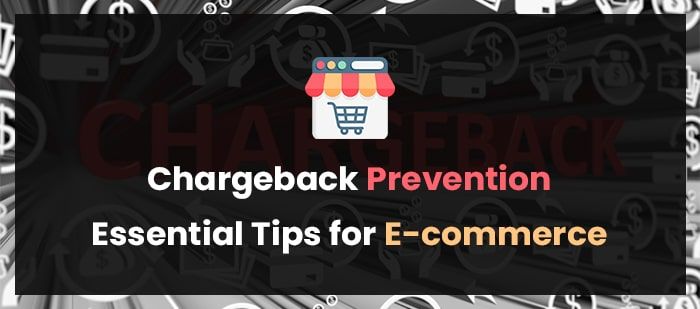
Comprehending Chargebacks
Chargebacks happen when a customer disputes a transaction with their bank, causing a reversal of funds from the merchant. These disputes often occur due to fraudulent activities, customer dissatisfaction, or misunderstandings about the purchase. For e-commerce businesses, chargebacks can lead to financial loss, increased operational costs, and potential harm to their brand image.
Understanding the common reasons for chargebacks is key to prevention. Fraudulent transactions, whether from stolen credit cards or identity theft, are a major cause. Clear communication about products and services can mitigate misunderstandings that result in disputes. For example, detailed product descriptions and transparent pricing help manage customer expectations and reduce the likelihood of dissatisfaction.
Payment processing errors are another factor. Ensuring that transactions are processed correctly, and promptly addressing any errors can decrease chargeback incidents. It’s also important to have clear and easy-to-follow return and refund policies to avoid conflicts.
Additionally, customers may issue chargebacks if they feel unsupported or unable to resolve issues directly with the business. Providing efficient and accessible customer service can address concerns before they escalate to disputes.
By focusing on these areas, e-commerce businesses can better understand and tackle the root causes of chargebacks, protecting both their revenue and reputation.
Some Related Blogs
- Proven Chargeback Prevention Techniques for Merchants
- The Future of Chargebacks: What U.S. Businesses Should Anticipate by 2029
- Preparing for a Chargeback Audit: Critical Steps for U.S. Companies
- Chargebacks in High-Risk Industries: Specialized Solutions for U.S. Enterprises
Utilizing Fraud Detection Tools
Deploying fraud detection tools is an important strategy for minimizing chargebacks. These systems can flag suspicious transactions before they are finalized, helping to prevent fraudulent orders. For instance, FraudLabs Pro offers real-time screening and analysis to identify and block potential fraud.
Kount leverages machine learning to provide comprehensive fraud detection, continuously updating its algorithms to stay ahead of emerging threats. Signifyd goes a step further by offering guaranteed fraud protection, which can safeguard your business from financial losses associated with chargebacks.
Incorporating these technologies into your e-commerce platform not only reduces fraudulent activities but also enhances customer trust. When customers know their transactions are secure, they are more likely to feel confident in making purchases from your site. Additionally, many of these tools provide detailed reports and analytics, allowing you to better understand the nature of fraudulent activities targeting your business. This data can be invaluable for refining your fraud prevention strategies over time.
Using fraud detection tools is a proactive measure that protects your business and improves customer satisfaction. By staying ahead of potential fraud, you can maintain a more secure and trustworthy shopping environment for your customers.
Effective Customer Communication
Product descriptions that are clear and accurate help reduce misunderstandings. Providing detailed images, specifications, and setting honest expectations about product performance can manage customer expectations effectively.
Additionally, customer service accessibility is key. Ensure customers can contact you through multiple channels such as email, phone, and live chat. Timely responses to customer inquiries can resolve issues before they escalate.
![]()
Email us anytime!
Email customer service 24/7
![]()
Call us anytime!
Reach customer care 24/7 at +1 (888) 901-8653
</div
Proactive communication about order status, shipping delays, or any changes to their purchase helps maintain transparency and trust. Sending order confirmations, shipping notifications, and follow-up emails can keep customers informed at every stage of their purchase journey.
Having a comprehensive FAQ section on your website can address common concerns and questions, which can prevent potential disputes. Offering a user-friendly return and refund policy that is easy to understand and access will also contribute to reducing chargebacks.
Training customer service representatives to handle complaints empathetically and efficiently is essential. By addressing issues promptly and fairly, you can turn a potentially negative experience into a positive one, thus reducing the likelihood of chargebacks.
By focusing on these aspects of communication, you can foster a positive relationship with your customers, which can lead to fewer disputes and a more robust e-commerce business.
Streamlined Order Fulfillment
Efficient order fulfillment processes can significantly reduce chargebacks related to shipment issues. Implementing strategies for accurate and timely delivery, such as utilizing reliable shipping partners and providing tracking information, ensures that customers receive their products as expected. Clear communication throughout the fulfillment process, including regular updates on order status and potential delays, helps manage customer expectations and reduces the chances of disputes.
Ensure your inventory management system is robust to prevent overselling and stockouts, which can lead to customer dissatisfaction and subsequent chargebacks. Using a real-time inventory tracking system can help you maintain optimal stock levels and fulfill orders promptly.
In cases where shipment issues do arise, have a clear protocol for handling disputes. Offering resolutions such as refunds, replacements, or discounts can help maintain customer satisfaction and avoid potential chargebacks. Additionally, having a streamlined return process can ease customer concerns and improve their overall shopping experience. Providing pre-paid return labels and easy-to-follow instructions can facilitate hassle-free returns.
To further enhance your fulfillment process, consider integrating automated systems that can handle tasks like order picking, packing, and shipping. Automation can reduce human errors and increase efficiency, ensuring orders are processed and dispatched swiftly. Collaborating with multiple shipping carriers can also provide flexibility and options for expedited shipping, catering to customers who need faster delivery.
Maintaining clear and accessible return and refund policies on your website is essential. Ensure these policies are easy to understand and prominently displayed, so customers know what to expect if they need to return a product.
Observing and Evaluating Chargeback Data
Regularly analyzing chargeback data can highlight trends and pinpoint problem areas. By reviewing the causes and frequency of chargebacks, you can identify whether specific products, transaction types, or customer segments are more prone to disputes. This analysis can reveal gaps in your processes and areas where improvements are needed. For example, if a high number of chargebacks are linked to a particular product, it might indicate issues with product quality or misleading descriptions.
Similarly, if certain transaction types see more disputes, refining your payment verification processes may be necessary. Use this data to continuously refine your fraud detection tools, adjust your product listings, and enhance your customer service protocols. Leveraging chargeback data effectively can help you stay proactive, adapting your strategies to minimize future disputes and protect your e-commerce business from financial losses.





